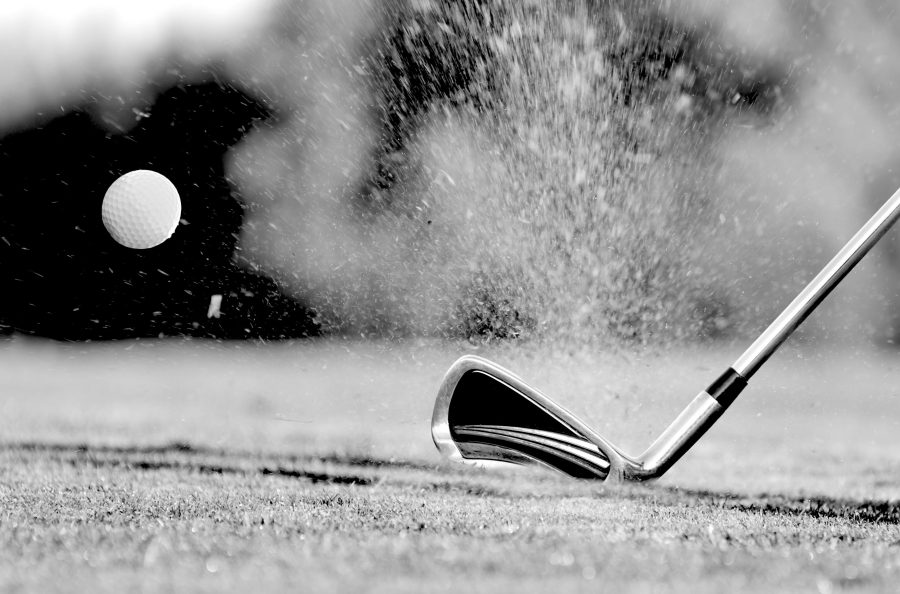ARTICLE ORIGINALLY PUBLISHED SPRING 2019
Slammed as a device of weak-wristed cads, a new ball managed to take over the entire sport within a few years
Sports change – rules are modified, equipment is improved, and skills are developed. Usually such change is evolutionary rather than revolutionary. Sometimes, however, the transformation is more dramatic, as in the introduction of the rubber-cored ball into British golf at the beginning of the 20th century.
Golf had originally been played with balls made from feathers, but these had been replaced in the late 19th century by ones manufactured from gutta-percha (a rubber-like polymer from tropical trees) that were both less expensive and easier to repair. At the turn of the century, the gutties were challenged by the Haskell, a rubber-cored ball named after its American inventor Coburn Haskell, a cycle manufacturer and dilettante sportsman, who patented the idea in 1898.
The new ball was created by winding elastic thread tightly around a central core and then compressing it within a protective cover. Its built-in elasticity offered golfers greater distance both off the tee and on the fairway. Additionally the new ball was also easier to play out of a bad lie because of its tendency to rise.
Forget that it was twice as expensive as the gutty and that it was harder to control on and near the greens: to the average club golfer this was wonderful news.
Traditionalists voiced their protest. The new ball would effectively shorten holes and ruin the layout of courses. In the words of a staunch opponent, elite amateur player John Low, “it was a man’s job to drive a gutta-percha ball the requisite 180 yards; a lad may easily do it now.”
In his opinion, the renowned and challenging links of “St Andrews had become an ideal course for the second-rate player … Formerly the greens could only be conquered by long driving, but now the holes are within the compass of infirm old gentlemen.”
Opponents of the innovation called the new ball ‘bounding Billy’, because of the extra run that it gained from its elasticity, and those who played with it were, by inference, ‘bounders’, complete with the social implications that the word carried.
It was the professional players who formed the real resistance group. They had honed their skills on the old type of ball. More than that, they felt that the new ball would undermine their income from the ‘pro shop’ – it lasted longer and did less damage to clubs, thus reducing the demand for repairs, and, unlike the gutty, could not be made or repaired in the club shop. Yet these same professionals were not averse to taking advantage of the excess demand for the rubber-cored ball in the early days and charged their customers high mark-ups.
In any event, as the Scotsman proclaimed, “nothing that the professionals can do will hinder the great body of amateur golfers from buying that ball which gives the greatest pleasure, be it rubber-filled, or anything you like.” Those golfers who wished to lower their scores bought the new ball.
J. H. Taylor, foundation president of the PGA, maintained that 1902 was the “critical year that saw the end of the gutty’s long and honourable reign”. In the early months of that year, the manufacturers of gutties continued to bring out new versions of their balls, but late spring and summer cast the die for the gutty’s fate. In the final of the Amateur Championship on May Day, both the winner, Charles Hutchings, and the losing finalist, Sydney Fry, played with Haskells – and then, in June, professional Sandy Herd won the Open in June with a rubber-cored ball. Most amateurs quickly decided that the rubber-cored ball was their preferred option.
When first imported, the rubber-cored ball was very expensive relative to the gutty, but over time competition between manufacturers brought the price down, though it still hovered around twice that of the gutta-percha ball. Nevertheless, Haskells proved to be up to six times more durable than the old-style ball, thereby offering greater value for money. Moreover, they reduced some of the other costs of golfing because they did less damage to wooden-faced clubs.
Their greatest advantage, for the average club player, was that they simply increased the enjoyment of the game. As one writer put it: “one never realised what a stubborn, inert thing a gutty is until the Haskell came on the scene.”
Although the new ball required a new skill, necessitating a different touch on or around greens, the better professionals soon came to terms with this requirement. After the Open Championship in 1903, an advertisement by the B.F. Goodrich Company, holders of the Haskell patent, simply listed the top five finishers – Harry Vardon, his brother Tom, Jack White, Alex Herd, and James Braid – noting that they had all used a Haskell ball and added: “Comment Unnecessary.”







